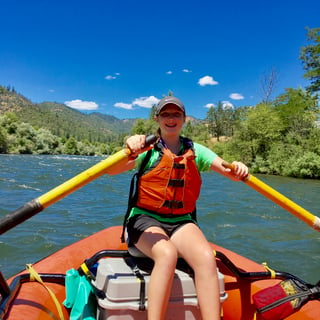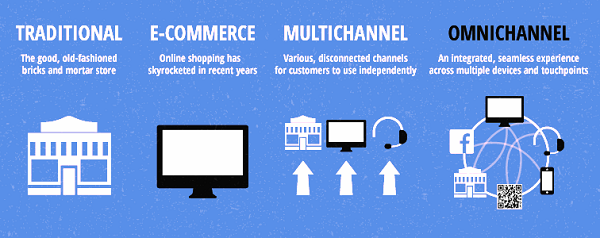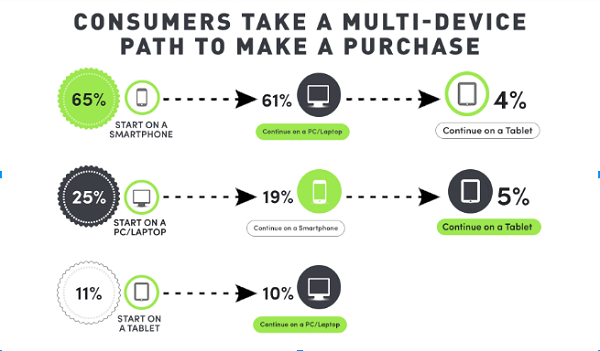The Intersection of Video Content and Success in Omnichannel Digital Marketing

If you want to be a successful outdoor industry marketing, you need to embrace the omnichannel world we live in. Traditional digital marketing has tended to focus on how to best prepare, optimize, and deliver content device-by-device. Today's most effective outdoor marketing incorporates a seamless experience for each customer across all devices whether they're at home, at the office, or in your store.
With regard to executing an omnichannel experience, according to Forbes, the outdoor and sports equipment retailers are the most advanced, with 66% either midway or fully omnichannel.
Where are you on this journey?
Let's take a deeper look at omnichannel marketing, and how video content can help businesses create a seamless experience for their customers.
What is Omnichannel Marketing?
Marketo, a provider of e-commerce platform solutions stated,
"The term “omnichannel” may be a marketing buzzword, but it refers to a significant shift: marketers now need to provide a seamless experience, regardless of channel or device."
Your potential customers have the choice of engaging with your company through a traditional "bricks & mortar" dealer carrying your product(s). They can also "experience" your company through product catalogs, postings on social media or through search results. Further contact can come by accessing your products and services through telephone and online chat bots, using an application on their phone, tablet, laptop or desktop computer. With every device they use to connect with your company, you want their experience to be consistent and complementary.

Original Infographic from SparkPay
Mobile shopping is now the norm. Check this insightful research from Contevo — which found a whopping 65 percent of consumers begin their journey to purchase on a smartphone.
Customers typically begin their research on a mobile device, however, they also continue it on other devices before making the final purchase. These customer journeys may span days, weeks, or months and it might even include a good number of touch points, being both virtual and physical.
Check out the fundamentals of digital marketing for the outdoor industry and these trends for more evidence of a need for a multi-device purchase path:
- A colossal 80 percent of shoppers use a mobile phone inside of a physical store to search product reviews, compare prices, or locate alternative stores.
- An estimated 10 billion mobile-connected devices are currently in use — a total expected to hit nearly 12 billion by 2020.

Image courtesy of Conteveo
Proof that Consumers Prefer Video Content
2016 saw a surge in the popularity of video as a content marketing format. From 360-degree videos to Facebook Live, marketers are responding to audiences' shorter attention spans by making content more interactive and visual -- and it's paying off.
Video is growing to dominate your audience's online activity: 78% of people watch videos online every week, and 55% watch videos online every day. If you don't already have a video marketing strategy in place for your website and social media, you're missing a tremendous opportunity to reach and engage with your audience. Additionally in a survey by Livestream:
- 80% of Livestream’s survey respondents would rather watch live video from a brand than read a blog (Livestream, 2016)
- 82% of Livestreams’s survey respondents prefer live video from a brand to social posts (Livestream, 2016).
Not convinced video marketing is the way of the future?
Video Marketing Automation is in line to be the next big push in digital marketing. As discussed at INBOUND16, your content in 2017 should be at least 60% video based. That's a big percentage, and it shows the importance of including video assets into your branding and messaging to your audience.
Looking for even more support to get the budget to grow your video marketing efforts? Here are a few statistics to help you understand exactly how popular video marketing has become in recent years, according to news shared by HubSpot:
- Video is projected to claim more than 80% of all web traffic by 2019.
- Adding a video to marketing emails can boost click-through rates by 200-300%.
- Embedding videos in landing pages can increase conversion rates by 80%.
- 90% of customers report that product videos help them make purchasing decisions.
- 64% of customers are more likely to buy a product online after watching a video about it. Digital marketing expert James McQuivey estimates that a single minute of video content is the equivalent of 1.8 million words.
Get More Out of Your Video Content With Video Marketing Automation
Naturally, once companies are on board with this shift, your strategy should go to the next level, which is where video marketing automation comes in.
Video content creation typically involves six steps according to Third Door Media. They are:
- Video creation and editing.
- Video management.
- Video optimization.
- Video distribution.
- Video analytics.
- Video hosting and integration.
All of these steps can be automated using video marketing software. The combinations can include:
- Video hosting that provides for delivering video and hosting customizable video players,
- Providing analytics of the videos that measure the performance of the content and audience engagement,
- Including an interactive ingredient such as clickable calls to action,
- Lead scoring for importation into a customer relationship management software, and; marketing automation systems.
According to Martech today, automated video marketing processes can:
- Expand brand access across devices and platforms. Automating distribution makes video easily accessible through platforms such as YouTube, Facebook, Pinterest and mobile devices. Smartphone users can access online video anytime, anywhere — which is not true for more traditional media channels.
- Maximize SEO. Properly tagged videos can improve search engine rankings, click-through rates, open rates and conversions. Remember, YouTube is the second-largest search engine and is owned by Google.
- Boost conversion rates. Nearly 60 percent of online consumers say they are more likely to buy a product after watching a video demonstration. Numerous studies show that retention rates for information that is both seen and heard is as high as 80 percent. That figure drops to 20 percent for information that is only seen, and 10 percent for information that is only heard.
Top flight digital marketing agencies are committed to providing their clients with "best of breed" technology to be successful. Two examples of this type of video automation services are provided by TwentyThree and Wistea. In a recent online Video Marketing Automation conference sponsored by TwentyThree, Tom Burgess, Director of Multimedia at Revenue River, noted that "the human brain processes video images 60,000 times faster than text." Both of these companies have created one-stop-shop for anything and everything you need to run a successful automated video marketing campaign.
Why Video Works? Data Proves It
If you are interested in hard data that video works, find out how a safety and fire protection company achieves meaningful results from video marketing. Check out this case study. You will learn that in just two years of the campaign being digital, they were able to grow seminar registrants by 90%, attendees by 40%, and qualified registrants by 454%, breaking records from all previous seminars.
The video marketing train is not slowing. In fact, if you have not even discussed how video can help your organization, it may be tough to jump on board.


